Text, photos and models by Aldo Zana
Aurora had already emerged as one of the leading brands in plastic kits when its products first reached Italy, shortly after their 1952 launch in the U.S. The catalogue focused on model planes and the few model cars were limited to 1:32-scale European sports and GT vehicles – at least, those were the ones sold in Italy.
The brand strategy aimed at a lower-end positioning than competitors Revell or Monogram. The Aurora plastic kits featured a lower number of parts, were easier to assemble and priced to be affordable by the majority of kids in middle- to low-income families. In Italy, one could buy as many as three Aurora car model kits for the cost of a single 1:24-scale product of the competition.
The launch of the Aurora Indy Winners series in 1958 was coherent with the strategy: easy to build kits, attractive boxes, good value for money. The collection re-marketed the Best-branded plastic kits from a few years back, originally promoted as: “E-Z Assemble”(sic) but never available in Italy.
The models, a total of six, are:
The precision of the reproduction is, admittedly, fair at best. The scale is uncertain: every model of the series has about the same overall length, between 5” and 6”. The wheels appear too large and the tires, made from real rubber, out of proportion with the bodies.
The instruction sheets are clear and straightforward, listing some 23 steps to final assembly. The painting instructions are very useful for foreign modelers who didn’t have published sources handy. Furthermore, the books then available were without color. The art on the box cover provides a good guide to painting, even though there are mistakes in the 1940 Maserati and in the 1953-54 Fuel Injection Special.
The former is correctly molded in a metallic-dark red plastic closely resembling the original livery, whereas the box art depicts the car in the customary Italian racing red. (And every Italian assembler opted for the red painting.)
The Fuel Injection Special was shown in the art and the instruction sheet in its 1954 ivory white livery, while the roadster driven by Bill Vukovich to his first victory in 1953 was dark grey with red wheels and yellow number over red disks. The instruction sheet adds confusion through the headline: “1953 Fuel Injection Special”, different from the art and description on the box cover.
The suggested color scheme isn’t the only below-average feature in the series. The driver and riding mechanic figurines share the same mold. Of course, the Maserati and the Fuel Injection Special kits include the driver only, while the other four kits include the driver and riding mechanic sitting so close as to look like Siamese twins. Anyway, the mold has four arms and four legs, even though the central two are fused together.
On the 1920 Monroe Special model it would have been difficult for the two on board to see over the front. Conversely, the Vukovich-like driver on the Fuel Injection Special towers above the seat, leaning rigidly forward to reach the steering wheel.
The rubber tires, despite being out of scale, have the indications of sizes and brands precisely molded on the sides: Oldfield Cord for the pre-1931 racers and Firestone on the Miller, Gilmore, Maserati, and Fuel Injection Special. The precise Firestone trade mark is completed by the miniaturized words: “Safety Lock Cord”. Quite surprising is the word “Japan” appearing on every tire: why was it added and what does it mean?

Each assembly sheet in the kits is clear and easy to follow. It paved the way to the sheets later used by all model kit manufacturers.
The rear side of the instruction sheet lists the whole period range of Aurora plastic kits: “17 exciting categories with over 150 different models”. Six categories, representing half of the whole catalogue, encompass aircraft and helicopters; two each for ships and military vehicles and tanks; one for HO scale railroad accessories; two for radio and electronic model kits; three for the figurines of Guys and Gals of All Nations and Famous Warriors; and one for a melée of subjects so wide as to include the Chief White Feather, the Venetian Gondola, the Oriental Beauty, the Roman Gladiator, the Clipper Ship and a lonely Mercer Raceabout car.
Apparently, the figurines were the best-seller in the US but never reached Italy. Nevertheless, it was good luck to have the inexpensive 1:32-scale car kits and dream about the legends of Indianapolis while assembling the six Winners.
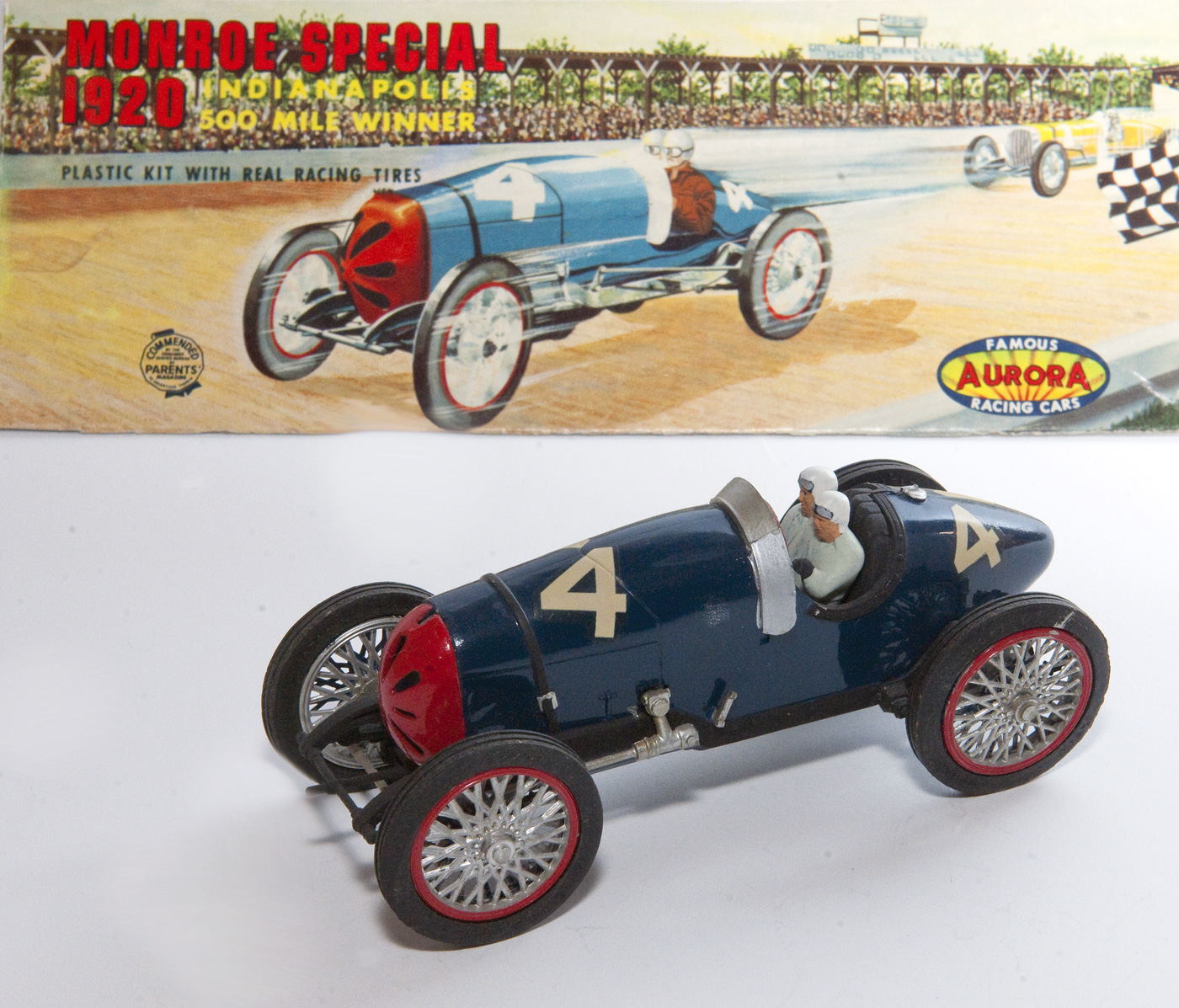
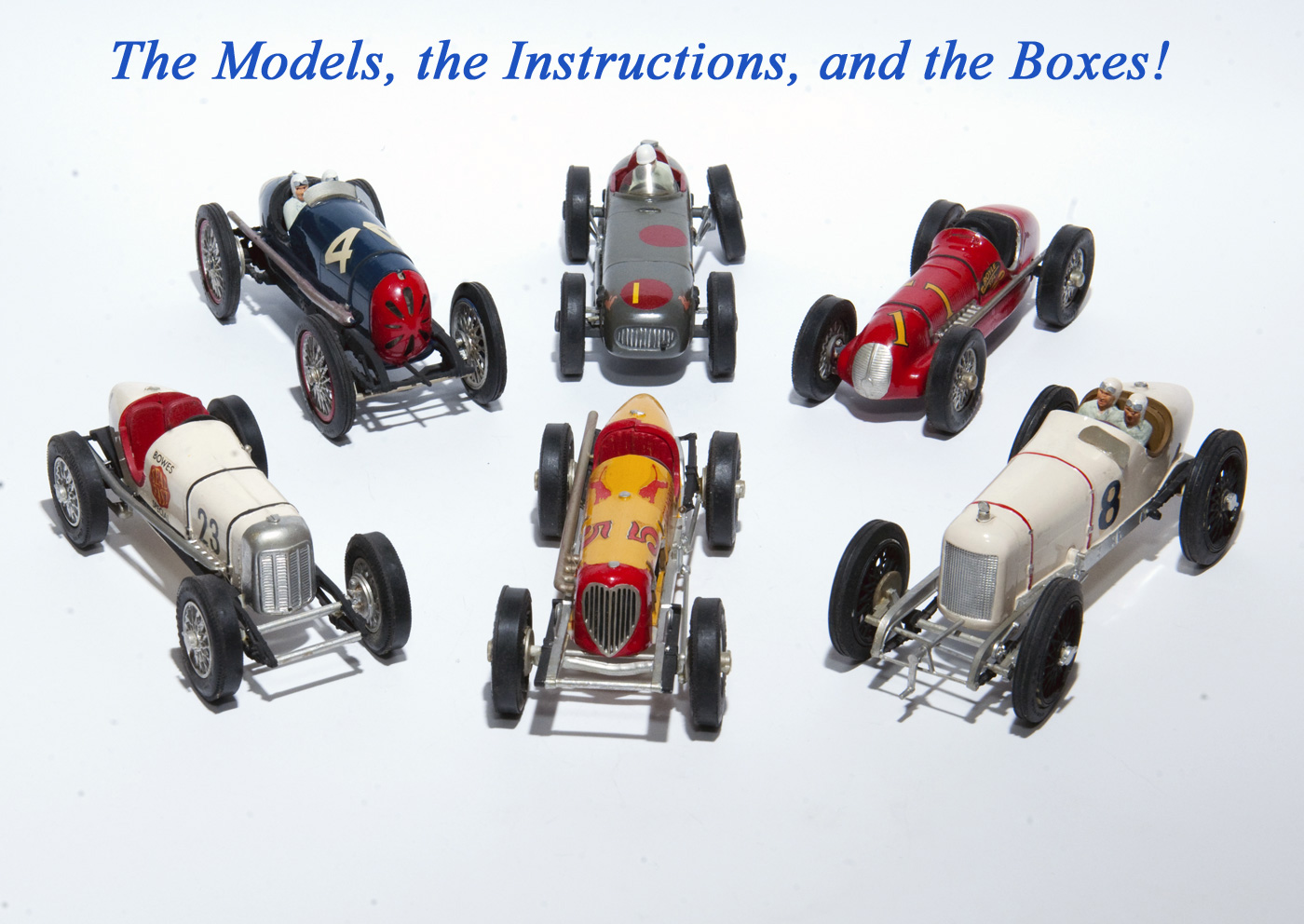
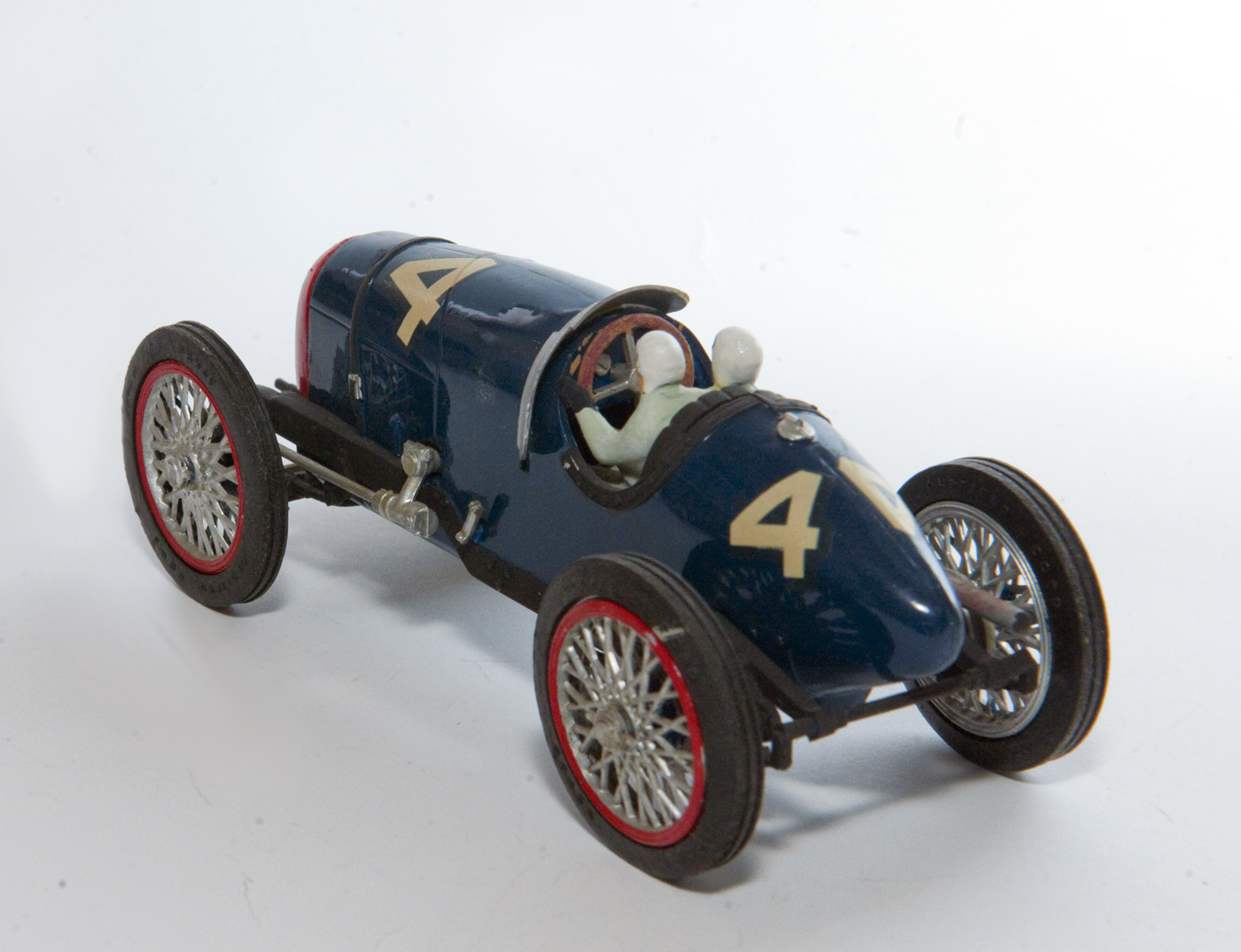
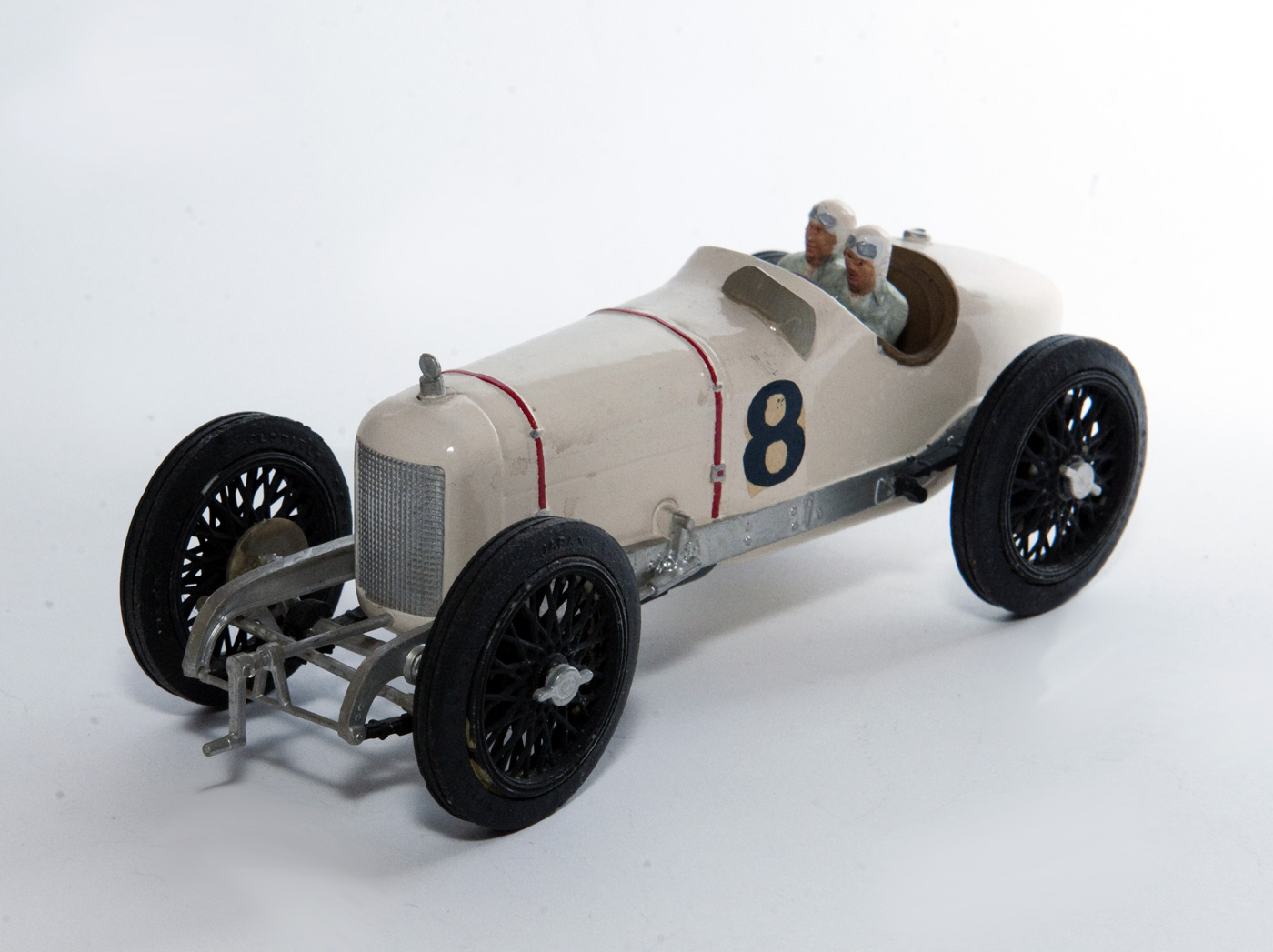

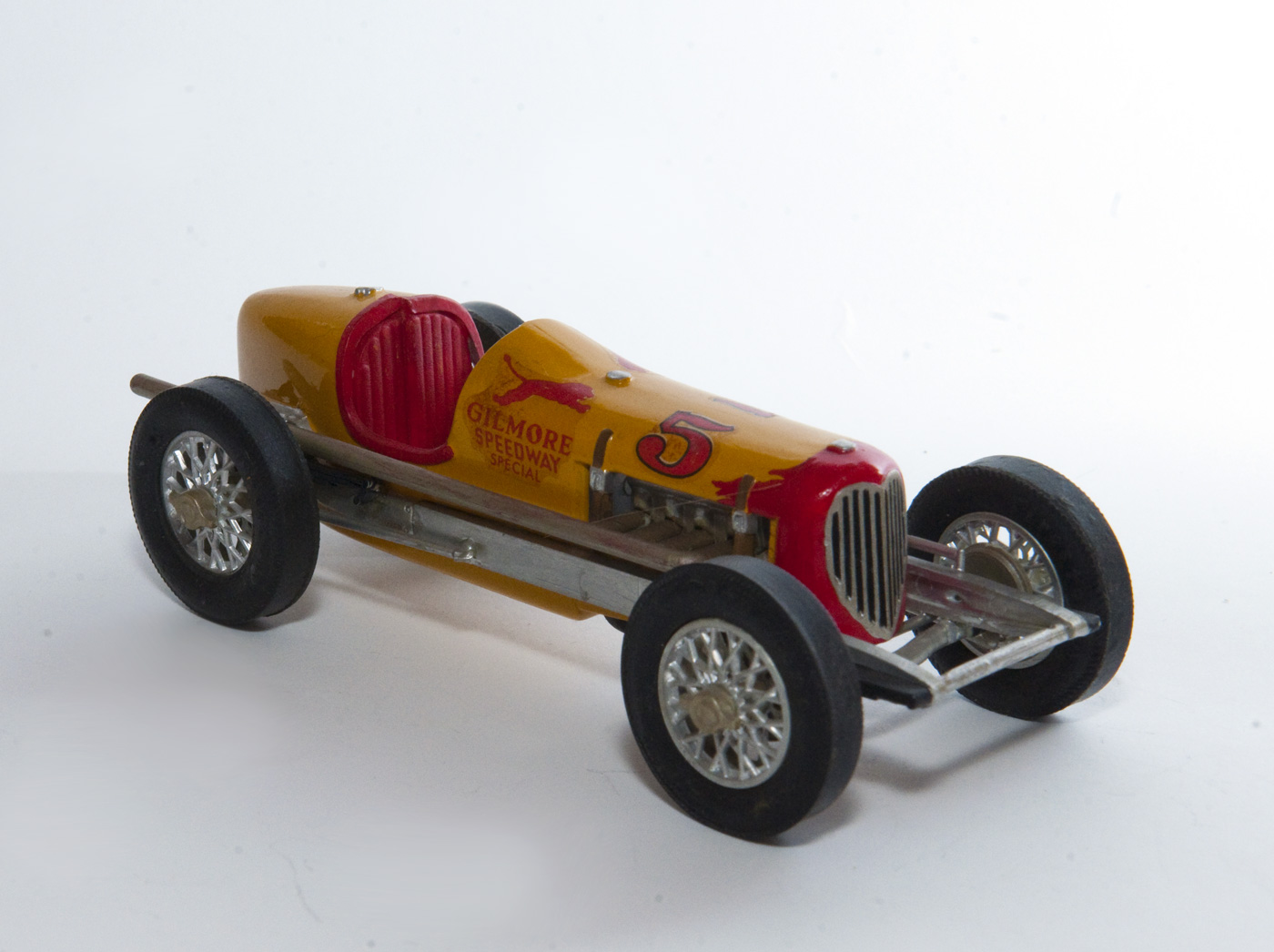
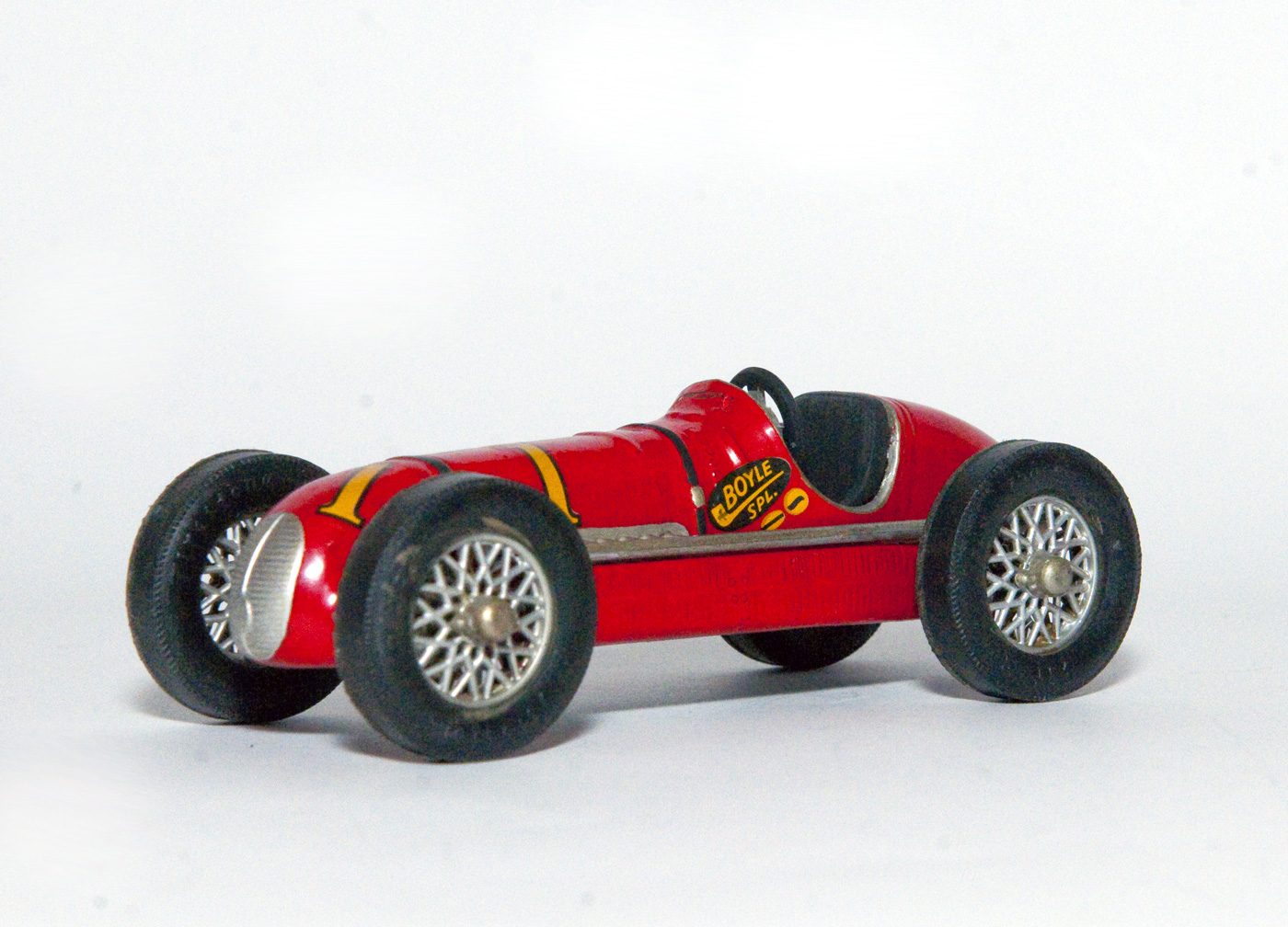



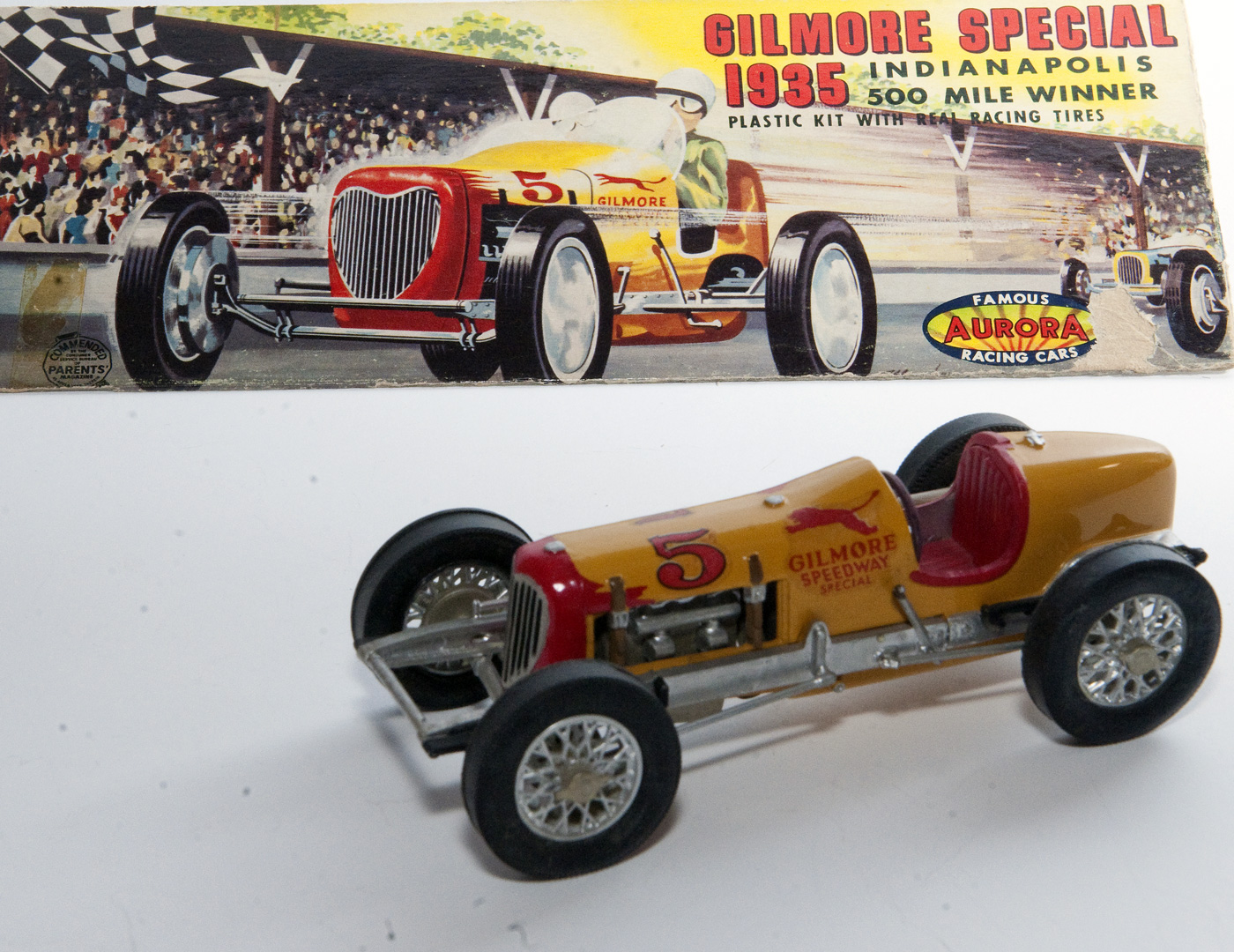
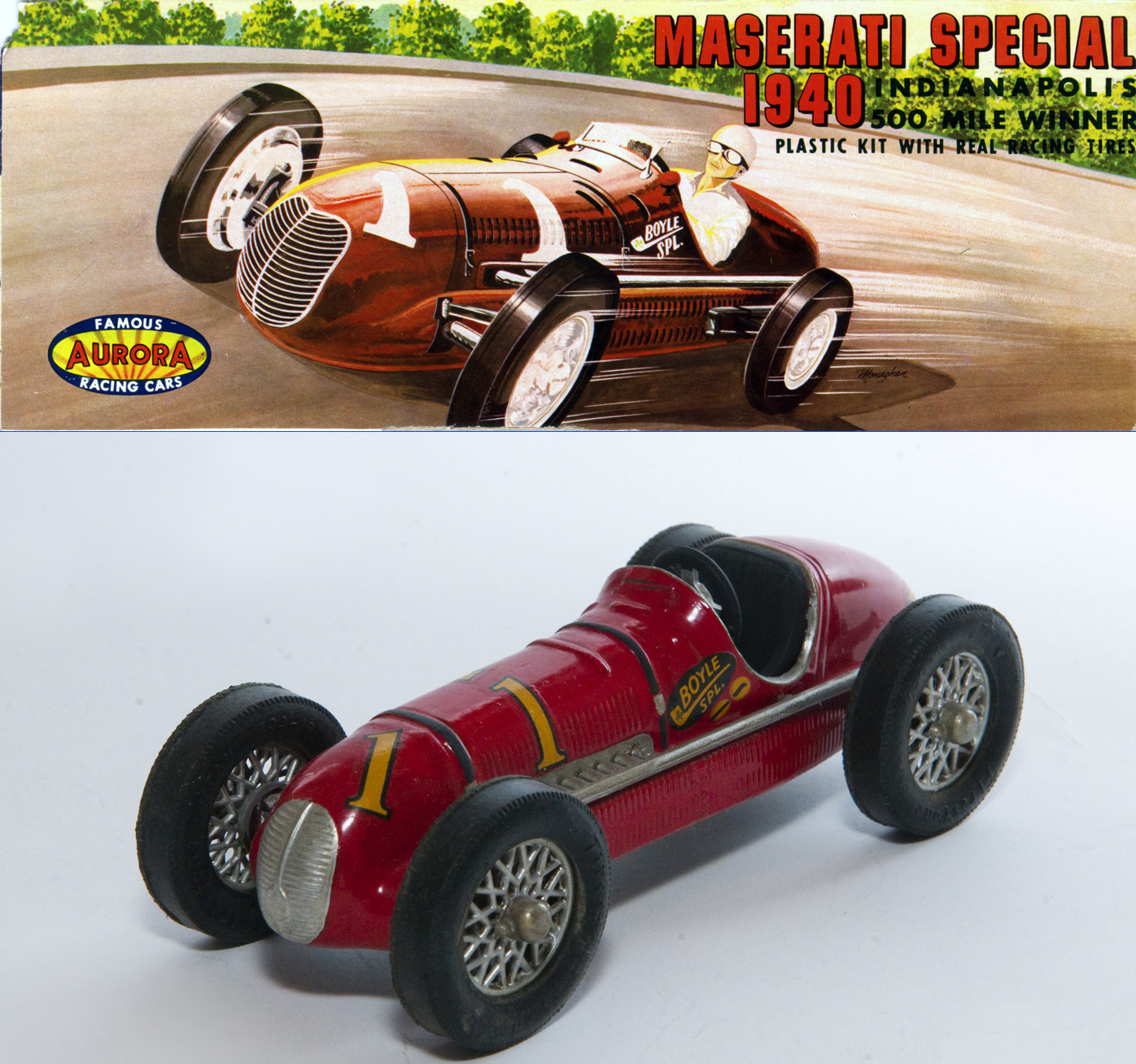
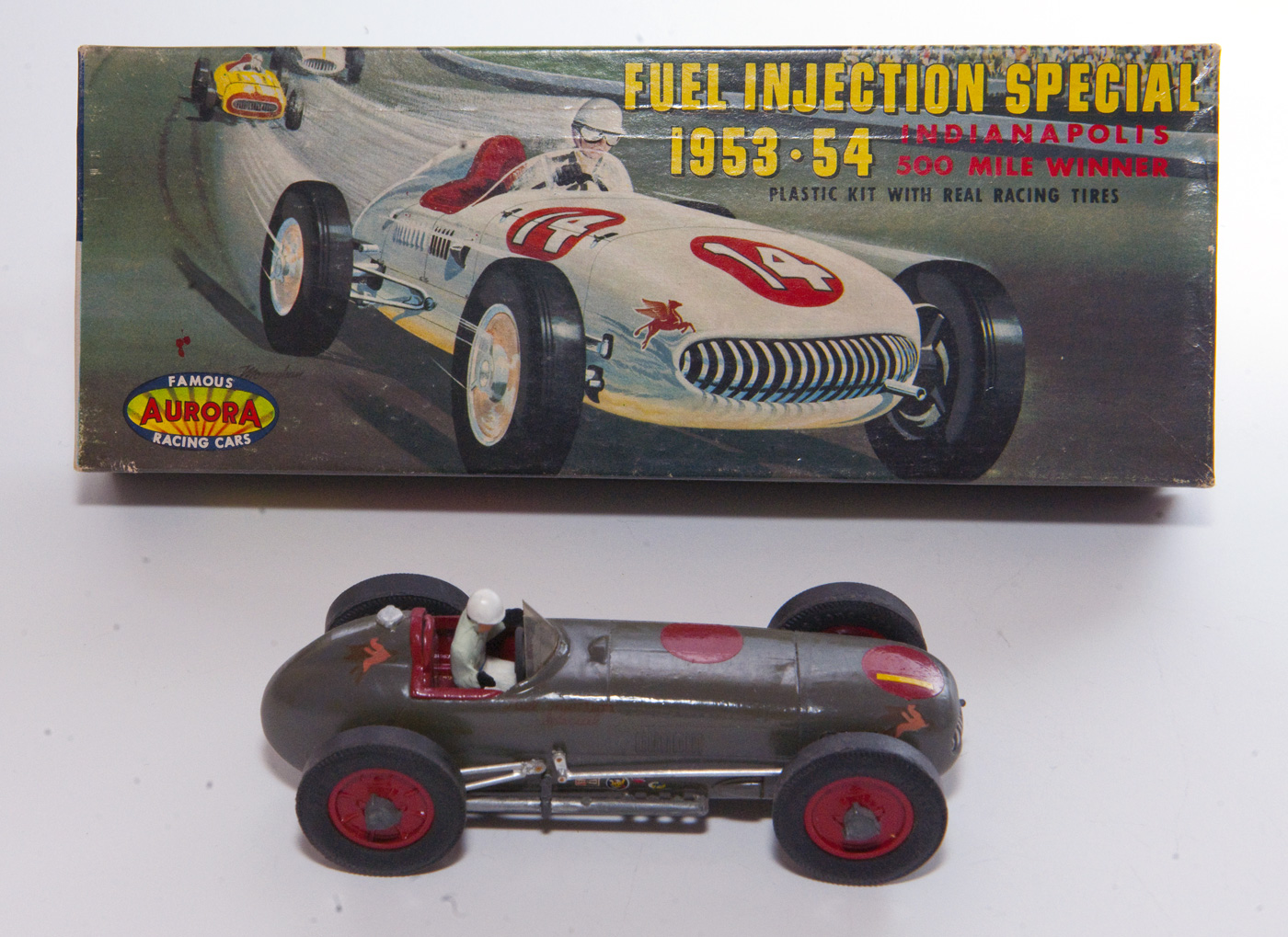
So very, very cool!
When I read a story like this, I want to know who the people were behind such a company ? What inspired them ? Can the writer provide any details about this ? Thanks – fascinating stuff. Peter Heimann, Vienna, Austria
Very pleasant memories of those models and the Aurora line in general. The Monroe Special was probably the first model kit I put together on my own. Thanks for the neat article!
Peter,
Good questions, but ones we don’t have an answer for. Might try researching the history of Aurora models….
Editor
I built all of the Aurora Indy kits at one time or another as I had listened to Indy on the radio for years. In fact I was driving my parents back from Bend, OR to Portland listening to Indy on the car radio in 1955. When we reached Mount Hood it was snowing and our car had no snow tires, I know exactly where I was on the road when they announced Bill Vukovich was killed. I was totally distraught!
The models always bothered me because of the wheels being so out of scale but I could find no better ones to use. I felt the same way about the drivers so my models never had them installed. Seeing the built models here took me back the my attic bedroom where the models were first built then displayed on my bookshelf. My Mother was a very tidy person so I assume that the models left home right after I did.
Thanks Aldo for a great article. I remember when these models came out an was very excited… only to discover that the wheels and tires were way out of scale to the rest of the car. It was really too bad as Aurora made all sorts of models, most of which were true to scale, even if it was to fit in the box. Thanks again for a great remembrance.